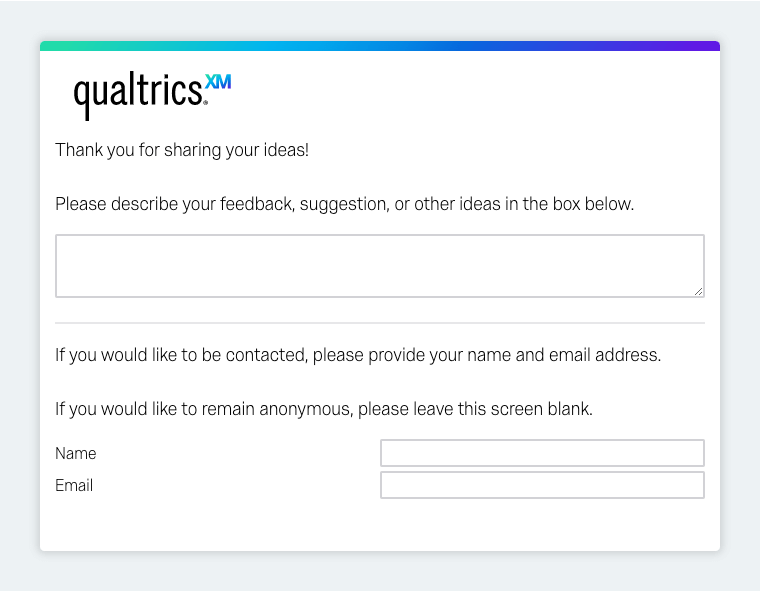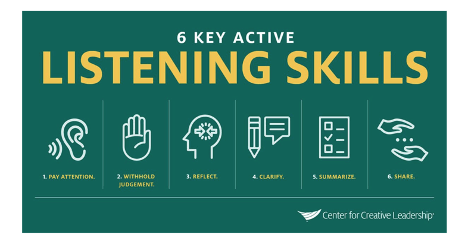
Employee Experience
Cultivating a culture of open communication
How to cultivate communication in the workplace
To create a truly exceptional employee experience, you need to cultivate an environment where employees feel free to share and receive open and honest feedback. By building a culture of open and trusted communication, you can create a more engaging, creative, and authentic workforce where employees feel deeply connected to the goals and objectives of the organization.
Workplace communication definition
Workplace communication is the giving and receiving of information between the people who make your business happen. That’s employees, managers, HR professionals, leadership, customers, vendor partners and other stakeholders.
The definition of workplace communication encompasses:
- formal communication, for example by giving rules and procedures to follow or issuing reports
- informal communication, like everyday speech, email, instant message and face-to-face communications
- forms of tacit communication like body language, tone of voice, and other non-verbal communication
Communication is a two-way process that can happen continuously in real-time, as in a face-to-face chat, or asynchronously, as in an exchange of emails. It is influenced by the context or environment in which it takes place.
Why is workplace communication so important?
Effective workplace communication determines so much of how a business thrives – or doesn’t. It directly impacts company culture, employee engagement, organizational success and employee productivity.
Good communication in the workplace enables your people to align and work together on common goals. It also helps them understand how and why things are done the way they are, which fosters more of a sense of meaningful work and provides a springboard for new ideas and opportunities.
Proper workplace communication is what keeps knowledge alive in your business and prevents what has been learned in the past from being lost in the future. With strong communication networks you can also make sure this knowledge is adapted and shaped for present and future challenges.
A study by The Economist found that the absence of good communication had a direct impact on a number of important business outcomes, according to a panel of over 400 US employees, managers and senior leaders.
- 52% said poor communication had added to stress
- 44% said communication barriers had led to delay or failure of projects
- 31% said communication problems had lowered morale
- 25% said miscommunication had led to missed performance goals
- 18% association poor communication with missed sales
The role of trust in effective communication
Many organizations claim to value effective communication in the workplace, but in reality few truly embody a culture of openness and honesty.
Underlying our willingness to converse openly at work is a solid foundation of trust in the organization and the entire work environment. Trust is established over time and involves both leaders and teammates making and following through on commitments, as well as being open, vulnerable, and authentic with one another.
This may be a direct report trusting in their manager to provide them with support on a highly visible stretch project or senior leader trusting in an R&D team to deliver product enhancements in time for launch. As trust begins to grow, stronger relationships are also cultivated with the support of open and honest communication.
How to grow a culture of workplace communication
Here are some of the tips from our team of industrial-organizational psychology experts on how to develop and maintain effective communication at work.
Offer regular updates
Real culture change occurs when all leaders and teammates commit to communicating openly and honestly. Senior leaders should set the example by sharing as much information as they can with employees, such as regular updates on the business. Take time to evaluate the current channels of communication to ensure that communication processes allow all teammates to receive regular senior leadership updates.
People want to be “in the know,” rather than “in the dark” with little information on the business and surprised when important decisions are made. Take time during your regular team meetings to update teammates on the current state of the business, including financial updates, organizational changes, and new hires. The more people feel informed, the more connected they feel to the organization by understanding how their work contributes to the organization’s overall strategy.
Make objectives and results public
While providing routine business updates fosters transparency, going one step further by sharing objectives and key results (OKRs) keeps everyone aligned and focused on the same outcome, while also promoting openness. People will understand how their role fits into the “big picture” and will be held accountable for delivering their set goals and objectives.
Open your door and your ears
Invite teammates to come and share their ideas, ask questions, solicit feedback, or even chat about plans for the upcoming weekend. Don’t only open your “door” (office, desk, or google chat) to people, but more importantly open your mind to their comments, questions, suggestions, or complaints. When people know that you are welcoming and open to hearing their thoughts and ideas, they’ll continue to come back to you in the future. If team members aren’t coming to you, make an effort to reach out to them individually to solicit their feedback and share with them.
Another avenue for collecting feedback is via an employee suggestion box – online or otherwise – which can lower barriers to communication by allowing employees to stay anonymous if they choose to.

Be open to constructive feedback
A key part of open and honest communication in the workplace is welcoming and encouraging feedback that may be negative or constructive. When people come to you with constructive feedback about your management practices, work processes, or business decisions, listen with an open mind and resist the urge to instantly refute what they are saying or shoot down any alternative suggestions they may have shared. Take time to reflect and consider the feedback provided instead of hastily dismissing it, which discourages teammates to speak up in the future.
Acknowledge feedback and take action
While you may not be able to act on all of the feedback people provide, it’s critical to acknowledge the feedback or ideas that were shared. Where you have taken suggestions on board, show how feedback has influenced decision making. People know that not all suggestions are turned into actions, but they do want to know that their ideas have been heard and considered. After employees have shared their thoughts, let them know that their ideas will be considered and that you appreciate their willingness to share.
Build a culture of psychological safety
In team meetings and one-on-ones, let people know that you welcome their suggestions, ideas, and feedback, especially when it challenges or is in disagreement with the current view. When an opposing viewpoint is shared, allow them to share their entire viewpoint, solicit questions and perspectives from others, and acknowledge that their opinions will be considered.
Being genuinely open to feedback in this way, particularly during group meetings or team building activities, creates an atmosphere of psychological safety. This is a driver of innovation and creativity, as well as a supporting pillar of employee engagement.
As HBR reported, employees may be speaking up, but still holding back some of their feedback if they don’t think it’s what managers want to hear. They found that 42% of employees who had spoken up about work problems had withheld feedback on other occasions, either because they felt it would be a waste of time or they feared personal consequences.
Make communication in the workplace a routine
Use practices like ‘round robins’ where everyone gets to contribute during your meetings or rotate assigning the ‘host’ duties of the meetings and assign agenda points to attendees to encourage participation and open sharing.
Practices like these not only help engage team members in your day-to-day work, but they can help team members practice sharing their point of view with others. You can also use project management techniques like RACI mapping (Responsible, Accountable, Consulted, and Informed) to make sure roles and responsibilities are clear on tasks and remind everyone to keep team members informed.
Promote sharing through different feedback channels
With the rise of remote working, workplace communication goes far beyond face-to-face interactions, so extend your communication skills development through various communication tools including instant messaging platforms (e.g., Google Chat, Slack etc.) and email, phone calls or video calls.
Because remote employees aren’t as immersed in the physical workspace with its informal face to face communication and ad hoc feedback opportunities, it’s very important to let them know that their feedback is valued and that they are encouraged to share through various communication channels.
Share your own feedback and ideas
As your teammates offer up suggestions, comments, and ideas, remember to be vocal in sharing your own thoughts and feedback. If you expect your teammates to share openly and honestly in team meetings, then you need to do the same. However, be careful not to dominate the conversation by oversharing your thoughts and opinions. Invite people to vocalize their feedback, while also providing your thoughts as well.
Admit mistakes
Part of communicating openly and honestly is being transparent and sharing when mistakes occur. When you’ve fallen short on a commitment or misspoke about a particular project or situation, take accountability for your missteps and apologize to your teammates. Be candid and open when explaining the situation, the specific mistake, key learnings, and how the situation will be resolved and prevented in the future. Encourage people to also be open when encounter challenges, mistakes, and lessons learned.
Ask for your own feedback
In addition to asking for feedback on projects and processes, ask your teammates for candid feedback on yourself, including your successes and areas of opportunity. Inviting open and honest feedback about yourself as a leader lets people know they are free to speak transparently and that you are committed to listening to their feedback and improving as a leader.
What does poor communication look like?
Reduced productivity
When communication in the workplace breaks down, the result is typically stress and confusion. Employees who don’t know what is expected of them will be less productive and spend more time searching for information through internal communications and less time working towards their professional goals.
Lowered employee engagement
If communication is sporadic or contradictory, employees can easily be blindsided by unexpected information or a perceived instability of organizational goals, which leads to a lack of employee engagement – after all, how can you be engaged with something that isn’t fully understood?
Another way workplace communication can fail is when there is a culture of secrecy or a taboo around criticizing management. If employees don’t feel empowered to speak honestly about how they perceive their work environment, they will disengage, resulting in lost productivity and a poorer employee experience.
Workplace communication skills to develop in your organization
- Active listening
Active listening is one of those communication skills that everyone can benefit from, and it becomes especially important when managers are listening to employees during face to face communication.
Rather than multitasking while you listen, stop what you are doing and provide your full attention while they are speaking. Resist the temptation to interject with your opinions and allow them to finish sharing. Before replying, pause briefly to gather your thoughts and repeat your understanding of what they have shared with you. This indicates that you have heard them, understand any concerns that they may have, and have considered their thoughts and ideas.

- Positive non-verbal communication
Your body position and facial expressions, as well as the tone of your voice, convey plenty of social information. If it’s positive, it will accord with and reinforce the information you’re delivering with words.
Making eye contact isn’t always possible – for example if you’re on a video call – but if you’re able to, it can communicate that you are focused on the person you’re talking to. Likewise, face the person you are talking to where possible and keep your hand gestures open and expressive, rather than folding your arms or hunching your shoulders while you speak.
- Silence
Allowing natural pauses can be an important part of effective workplace communication. These brief silences allow the person you’re talking to to absorb what you’ve said, and to interject at their own pace when they want to ask a question or make a comment. They also give you a chance to observe the other person’s body language and expression. Do they seem engaged with the conversation? Does their face look doubtful or confused?
A virtuous circle of workplace communication
As both trust and open communication begin to take root in the work environment, people will not only feel encouraged to speak candidly but will share their innovative ideas; they will want to contribute even more.
This means that a person’s previous experience of learning about business updates on a need-to-know basis and speaking up only when asked is transformed into an engaging and vibrant experience where transparency and openness are championed. People understand and are invested in the goals and successes of the organization, are encouraged to speak up in any situation, and are deeply connected to their work and colleagues.
Learn how to collect vital feedback from your team